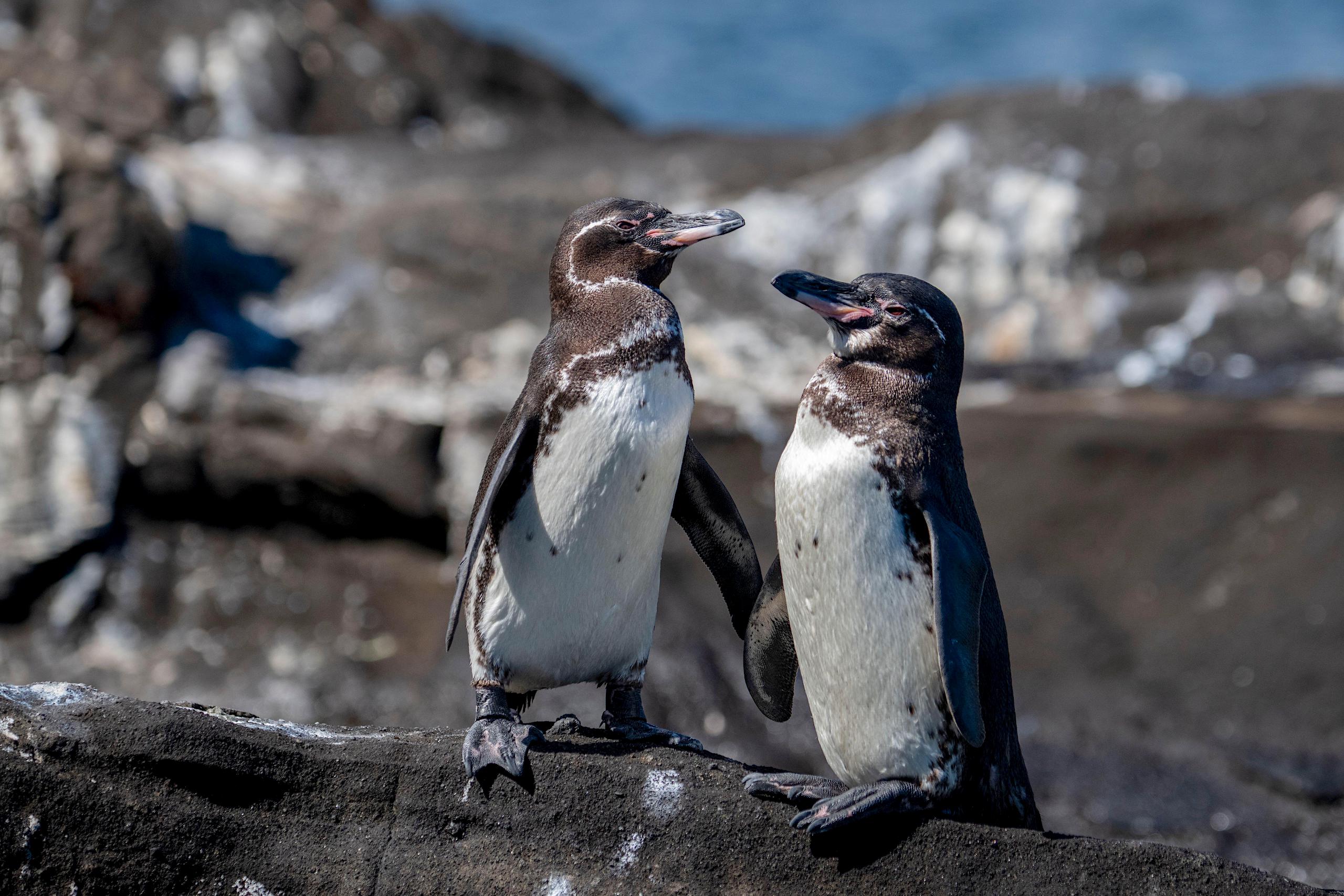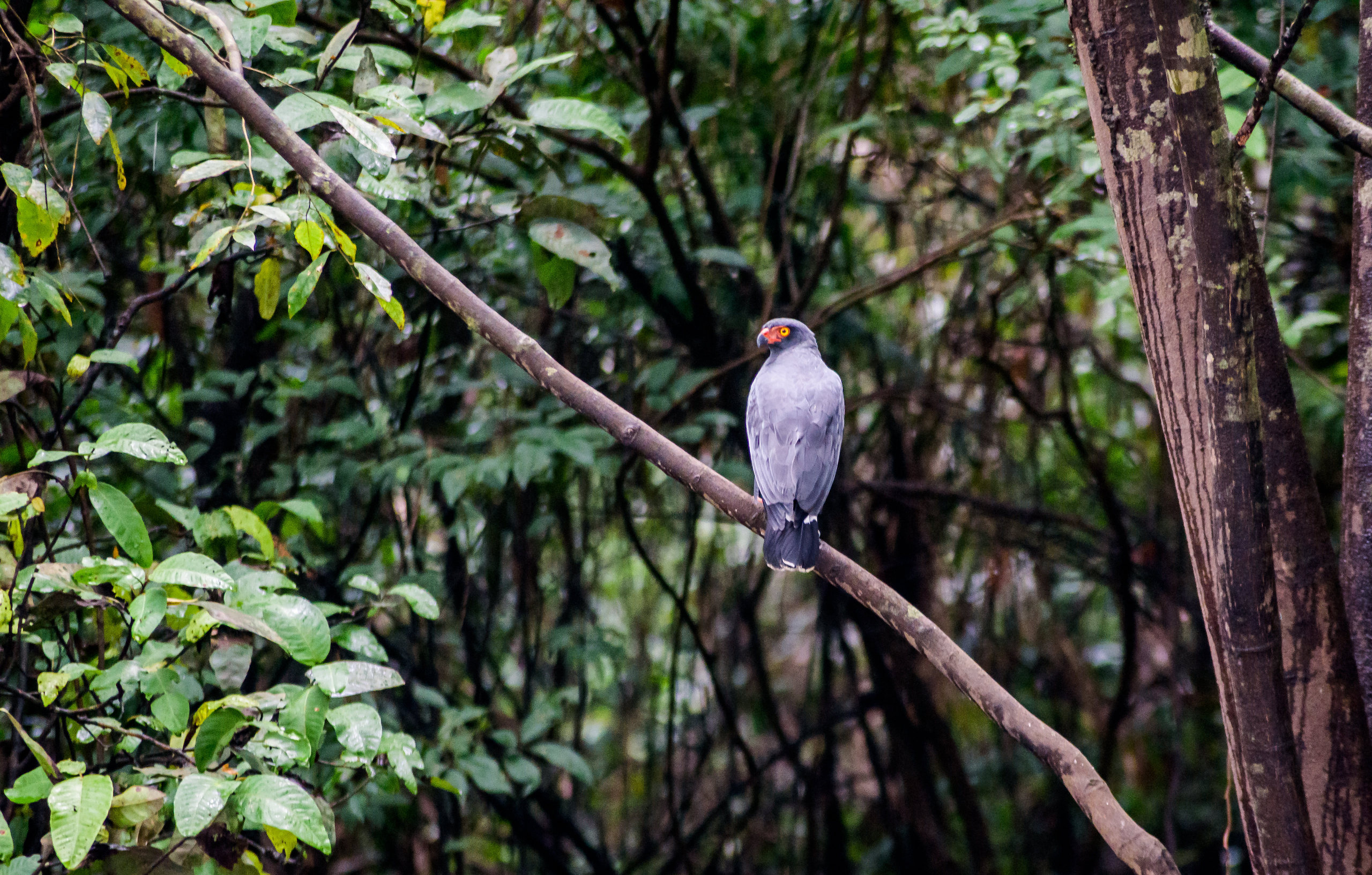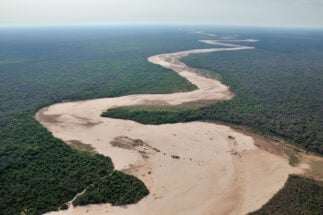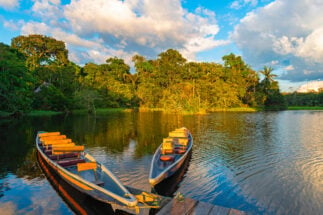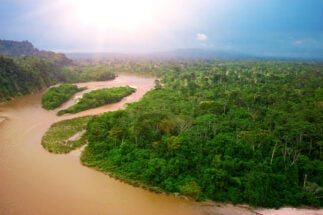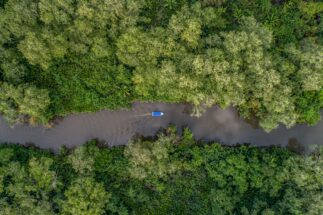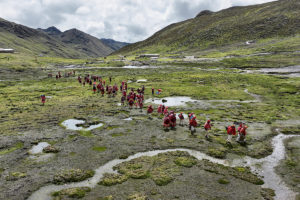Debt and the climate crisis are suffocating Latin America, trapping it in a vicious cycle that is difficult to escape. According to the Economic Commission for Latin America and the Caribbean (ECLAC), as of March 2023 the average public debt of 16 countries in the region amounted to 49.5% of their total GDP. This leaves them struggling to fund efforts to tackle climate change, while taking on more debt when disasters occur. But potential solutions are emerging, with one option having been promoted for some decades now: debt-for-nature swaps.
Debt-for-nature swaps are usually voluntary operations in which a creditor – a government, multilateral organisation or even a private company – cancels or reduces the amount of money it is owed by a debtor country, as long as that country commits to investing in the conservation of forests, reefs or other ecosystems. Often, environmentally minded NGOs will also participate in the swap, by buying part of the debt from creditors or distributing funds to the debtor country.
Creditors may appear to lose out in debt-for-nature swaps, but part of the theory behind such deals is that protecting nature, though difficult to quantify, is universally beneficial.
The world’s first swap took place in Bolivia in 1987. Since then, others in the region have followed in doing so, including Ecuador, Peru, Colombia, Chile, Costa Rica, Belize and Uruguay.
Not all swaps are the same, and the attached conditions vary. “There is no single definition and, in reality, there are infinite ways of doing them to the point that they can be difficult to understand, even for those of us who work in this field,” explains Juan José Guzmán Ayala, a climate finance expert who has advised the Atlantic Council and World Wildlife Fund.
In addition, some debt-for-nature deals are marred by transparency problems, and even accusations of greenwashing. “The governments or companies involved do not usually explain very well what the swap is about: how it was done, who gained what, what the alternative was to not doing it,” Guzmán Ayala adds.
According to economist Federico Sibaja, these swaps are encouraged “in the desperate moment that Latin America is going through, with the urgent aim of obtaining more financing at any cost.” Sibaja authored a 2022 report published by Argentina’s Environment and Natural Resources Foundation (FARN) that took a critical look at debt-for-climate and debt-for-nature swap mechanisms.
In the past year, Colombia – one of the most indebted countries in South America, according to ECLAC – has been leading calls for debt-for-climate swaps. Sibaja recommends caution: “Swaps do not propose a systemic solution to either the debt crisis or the climate and biodiversity crisis, but they do provide an explicit recognition of the relationship between the debt crisis and the climate crisis in the region.”
Similarly, the International Monetary Fund says it is usually more effective to deal with debt and climate or nature as two separate issues.
Galápagos in focus
In 2023, Ecuador signed the largest debt-for-nature swap in history, reportedly saving the country US$1.1 billion, including interest, from which some $300 million will go towards supporting marine conservation in the Galápagos Islands.
Understanding this gigantic operation is not easy. In May 2023, Switzerland’s Credit Suisse bought a chunk of Ecuador’s debt worth $1.63 billion, which the bank then auctioned at $656 million.
“This [auction] happened because Ecuador, like many countries, does not have the potential to pay its debts easily. And instead of losing everything, [the creditors] prefer to auction it off,” explains Guzmán Ayala.
To pay back Credit Suisse, Ecuador then acquired a new loan for $656 million from GPS Blue Financing Designated Activity Company, a financial services provider based in Ireland. With the debt-for-nature swap in place, a charitable trust named the Galápagos Life Fund was created to manage the funds for conservation work. The Ecuadorian government will now make quarterly deposits into this fund for the next 18 years, until it reaches $450 million. The remainder of the $656 million loan will be paid directly to GPS Blue Financing, plus interest.
Swaps are not bad, but this debt is not being cancelled – it is being replaced by a new loan with very serious conditionsDaniel Ortega, Ecuador’s former environment minister
This transaction has raised concerns about its transparency and, among some, its impact on Ecuadorian sovereignty. After it was established, Ecuador’s former environment minister Daniel Ortega criticised the deal: “Swaps are not bad, but what is happening now is a barter, because the debt is not being cancelled – it is being replaced by a new loan with very serious conditions.”
One of these conditions is the loan’s 11% interest rate, which is considered by some to be exploitatively high and will predominantly see Ecuador paying transaction costs for years. In a statement signed by Ortega and 260 debt and climate justice activists, academics and civil society analysts, the deal is accused of awarding a disproportionate say in the future of Galápagos to a small collection of foreign, private companies.
The creation of the Galápagos Life Fund is also in question: it has been established in the US state of Delaware, which is considered a tax haven by many. “For this reason, we consider that it does not meet the best available standards and practices in terms of governance and transparency,” Ortega argues.
In a statement made in June, the Ecuadorian government said the Galápagos Life Fund was created to try to shield the deal from “political influences that want to misuse economic resources”. Around the same time the government released a related document to say that the fund was set up in Delaware at the request of the donors. It adds that annual budget-allocation and project-management audits are included in the plan.
Diálogo Chino spoke to Sandra Guzmán, founder of the Climate Finance Group for Latin America and the Caribbean (GFLAC), an academic and civil society network. She says this lack of clarity has been the biggest mistake while establishing the Galápagos deal: “The conditions of the swap were not made very public, and that’s why there was so much commotion. There was also insufficient information on the extent to which it will generate social benefits. Without such transparency, it is difficult to know if they will fulfil their objective, and we can fall into exercises that are more greenwashing.”
Positive impacts in Peru
Beyond the doubts, the debt-for-nature mechanism has also had positive impacts. Since 1995, Peru has established such deals with various creditors, including the United States, Finland, Germany and Canada.
One of the most successful was the 2002 tropical forest conservation agreement between Peru and the United States, which allowed conservation projects to be carried out in the Pacaya Samiria National Reserve, in the heart of the Peruvian Amazon.
“It weighs on me to remember how many trees we used to cut down, but now we understand that we must take care of our resources for the future of our children,” says Linorio Novoa, a resident of the reserve. Novoa was trained to work in ecotourism through the project, which has helped to protect more than 2 million hectares of forest, and the flora and fauna within them.
“The change I have made in my life has been wonderful,” adds Novoa, who now runs Ivy Mara Ey, a lodge and tour business that receives some 250 tourists a year.
Under this swap, the United States forgave a portion of Peru’s debt burden to establish a conservation fund worth $10.6 million. To support this, WWF, The Nature Conservancy and Conservation International contributed $1.1 million. This fund became the Peruvian Trust Fund for National Parks and Protected Areas (Profonanpe), the country’s only environmental fund, which has help to finance 41 projects in 17 natural protected areas.
“Almost 30% was invested in Pacaya Samiria in a long-term project and the rest were specific, short-term interventions,” says Luis Espinel, the vice-president of Conservation International Peru.
The positive impacts of this swap included a 142% increase in income between 2010 and 2014 among 2,440 families living in the Pacaya Samiria National Reserve. Furthermore, endangered species such as the taricaya or yellow-spotted river turtle (Podocnemis unifilis) are being recovered, and according to official data, 93.66% of the reserve is said to be in a good state of conservation.
In 2023, Peru signed a new swap that will alleviate almost $20 million of its outstanding debt with the United States. Again, Conservation International, WWF and The Nature Conservancy have contributed to the fund, as well as the Wildlife Conservation Society; the NGOs’ contributions amount to $3 million. In return, over the next 13 years this money will be invested in projects that protect and restore tropical forests, such as working with communities on sustainable businesses.
“It is a debt that the country was supposed to pay and instead will deposit each year in an account that will be administered by Profonanpe,” explains Espinel. His organisation is a member of the swap’s oversight committee alongside the other donor NGOs, and representatives of both governments and civil society. “But it is important to remember that these resources cannot be allocated to recurrent expenses of the Peruvian state, such as the payment of environmental ministry staff,” he adds.
Bigger change is needed
The International Monetary Fund (IMF) admits that debt swaps for climate action or nature cannot restore a country’s solvency unless they involve a very large percentage of public debt and substantial relief. No swap has yet come close to achieving this, while the IMF says addressing debt and climate change separately is often more effective.
Nothing less than a reform of the international debt architecture is needed, Sandra Guzmán tells Diálogo Chino. Nowhere is this need more pressing than among developing countries which, according to ECLAC, have now collectively reached an historic debt high. This proposal has also been encouraged by the UN: last June, Secretary General António Guterres said the world’s existing financial architecture is “outdated, dysfunctional and unjust”.
Almost 30% of Ecuador’s income comes from fossil fuels. So no matter how many swaps it makes, it will not be able to decouple its economy from fossil fuelsSandra Guzmán, founder of the Climate Finance Group for Latin America and the Caribbean
Debt-for-nature swaps “will not solve historical indebtedness unless we change the behaviour of financial institutions. That is, how we prevent countries from indebting themselves with very high interest rates in perpetuity,” says Guzmán.
Guzmán continues by pointing out another primary reason for a financial paradigm shift: “Although Ecuador invests in protecting Galápagos, almost 30% of the country’s income comes from fossil fuels, so no matter how many swaps it makes, it will not be able to decouple its economy from fossil fuels. So, how do we make it more worthwhile to invest in protecting the environment and not destroying it?”
The challenge for Latin America, according to Juan José Guzmán Ayala, is not always being clear on how much it will cost to deal with climate change and its energy transition. He says that Africa may lead the way in doing this: in June 2022, it was estimated that the continent requires somewhere in the region of $2.8 trillion between 2020 and 2030 to finance its climate change mitigation and adaptation targets. “Before asking for financing”, he says, “Latin America must know how much to ask for, and that is why I say that all these swaps are a bit inadequate.”
